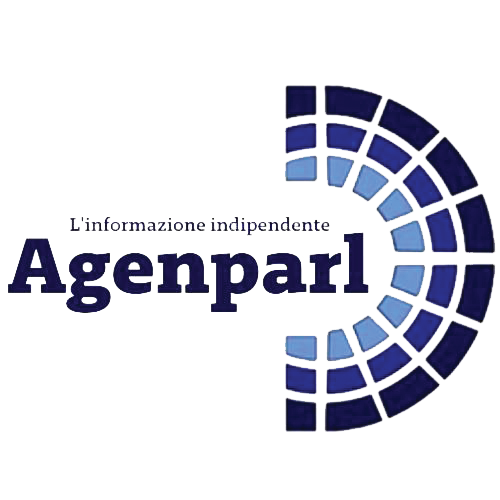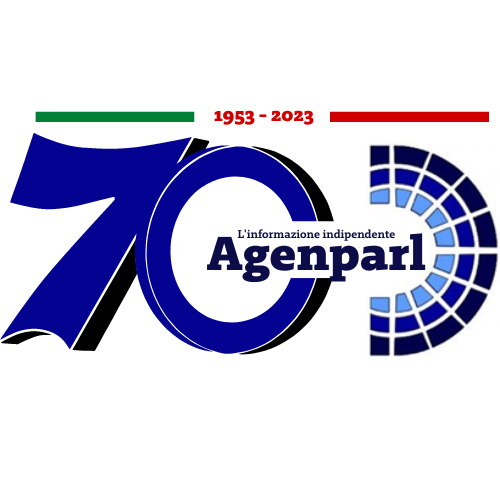 (AGENPARL) - Roma, 29 Agosto 2025
(AGENPARL) - Roma, 29 Agosto 2025(AGENPARL) – Fri 29 August 2025 A weekly compendium of media reports on science and technology achievements
at Lawrence Livermore National Laboratory. Though the Laboratory reviews
items for overall accuracy, the reporting organizations are responsible for
the content in the links below.
LLNL Report,
Shown is a rendering of Firefly’s Elytra Dawn vehicle utilizing LLNL’s
telescope to perform space domain awareness operations. (Graphic credit:
Firefly Aerospace)
Fly me to the moon
https://www.independentnews.com/news/livermore_news/livermore-lab-optics-clearing-a-safe-path-to-the-moon/article_5ecd659b-6cea-439c-8a19-26d46bab9b81.html
The U.S. Department of Defense (DoD) has tapped Lawrence Livermore National
Laboratory (LLNL) to lend its optics expertise in monitoring the space
between the Earth and the Moon. Such spatial awareness is necessary for the
lunar missions that are scheduled to land people on the Moon within the next
two years and beyond, according to the DoD.
LLNL recently announced partnerships with Texas-based space and
defense-technology company Firefly Aerospace to provide telescopes on two of
its missions. The short, 12- to 13-month turnaround of both missions will
test the delivery time of a new program under the DoD’s Defense Innovation
Unit, known as the Sinequone project, aimed at ensuring the safety of lunar
missions.
“This has come together very rapidly,” LLNL physicist Nathan Golovich
said, adding that space missions typically allow several years to develop
their payloads. “That’s one thing that the Livermore space program prides
itself in: being able to respond quickly and get payloads ready to be
integrated on the spacecraft at an extremely fast speed.”
Read More
https://www.independentnews.com/news/livermore_news/livermore-lab-optics-clearing-a-safe-path-to-the-moon/article_5ecd659b-6cea-439c-8a19-26d46bab9b81.html
The THOR target, featuring the windows around the hohlraum’s equator.
(Courtesy LANL)
The might of THOR
Los Alamos, Lawrence Livermore National Labs Achieve Fusion Ignition With Groundbreaking Approach
A Los Alamos National Laboratory-led team working in conjunction with
Lawrence Livermore National Laboratory (LLNL) has achieved ignition using the
National Ignition Facility. The team conducted an experiment June 22 that
generated a yield of 2.4 +- 0.09 megajoules of energy and created a
self-sustaining feedback loop called a “burning plasma.”
“This shows how well our designs can create fusion ignition conditions to
address key stockpile stewardship questions,” said Los Alamos physicist
Joseph Smidt, the co-director of the LANL inertial confinement fusion
program.
This was the first application of LANL’s Thinned Hohlraum Optimization for
Radflow (THOR) window diagnostic system. The THOR window system leverages a
modified version of LLNL’s ignition platform to produce extreme X-ray
output. Scientists plan to use these X-rays to blast test materials to study
how radiation flows through them or how much X-ray energy gets absorbed.
“This fantastic result is only possible because of the team of people
working together,” said Ryan Lester, Lab physicist and THOR campaign lead.
“We pulled this off in less than a year because of everyone’s commitment.
We moved fast and we moved together, showing what can happen when the whole
team is aligned and all-in.”
Read More
Los Alamos, Lawrence Livermore National Labs Achieve Fusion Ignition With Groundbreaking Approach
LLNL scientists have helped develop an advanced, real-time tsunami
forecasting system — powered by El Capitan, the world’s fastest
supercomputer. (Images courtesy of Tzanio Kolev/LLNL)
The tide is high
LLNL develops system for real-time tsunami forecasting using El Capitan
Scientists at Lawrence Livermore National Laboratory have helped develop a
real-time tsunami forecasting system that could improve early warning
capabilities for coastal communities near earthquake zones. The system is
powered by El Capitan, the world’s fastest supercomputer.
With a theoretical peak performance of 2.79 quintillion calculations per
second, El Capitan is part of a new generation of exascale supercomputers,
designed for solving the most complex problems in science. It was developed
through funding from the Advanced Simulation and Computing (ASC) program at
the National Nuclear Security Administration (NNSA).
LLNL researchers used El Capitan to create a large library of physics-based
simulations that model how seafloor motion from earthquakes generates tsunami
waves. The work was detailed in a paper selected as a finalist for the 2025
ACM Gordon Bell Prize, a prestigious award in high-performance computing,
according to a press release from LLNL.
The team used over 43,500 AMD Instinct Accelerated Processing Units (APUs) to
simulate acoustic-gravity wave propagation, which shows how underwater
earthquake waves move through the ocean. By performing this computing in
advance, they developed a dataset that smaller computers can later use for
rapid, real-time tsunami forecasting.
As part of the project, the researchers developed a tsunami “digital
twin” in collaboration with the Oden Institute at the University of Texas
at Austin and the Scripps Institution of Oceanography at the University of
California, San Diego. This real-time simulation acts as a virtual replica of
how the ocean responds to earthquakes.
Read More
LLNL develops system for real-time tsunami forecasting using El Capitan
During exploration drilling at the Halleck Creek Rare Earth project,
geologists conduct field surface research. (Image: NASA / NASA’s Goddard
Space Flight Center / University of Arizona)
Studying Bennu
Elements in Samples from Asteroid Bennu Reflect Composition of Early Solar System, Study Says
The first bodies to form in the Solar System acquired their materials from
stars, the presolar molecular cloud and the protoplanetary disk. Asteroids
that have not undergone planetary differentiation retain evidence of these
primary materials; however, geologic processes such as hydrothermal
alteration can dramatically change their compositions and chemistry. In new
research, scientists analyzed the elemental and isotopic compositions of
samples from asteroid Bennu to uncover the sources and types of material
accreted by its parent body.
“We found that Bennu has an elemental composition that very closely matches
the Sun,” said LLNL scientist Greg Brennecka.
“That means the material recovered from Bennu is a great reference for the
starting composition of the entire Solar System.”
“It is remarkable that Bennu has survived so long without seeing high
temperatures that would ‘cook’ some of the ingredients.”
Scientists are still studying how planets form, and learning the initial
composition of the Solar System is like obtaining the list of ingredients to
bake a cake.
“With that ingredients list, we now have a better idea of how those
elements all came together to form the planets in our Solar System, and,
eventually, Earth and its living inhabitants,” Dr. Brennecka said.
“If we are to learn about our origins, the starting point is the
composition of the Solar System.”
Read More
Elements in Samples from Asteroid Bennu Reflect Composition of Early Solar System, Study Says
Supporting Texas
Lawrence Livermore National Laboratory (LLNL) has successfully concluded its
donation campaign aimed at supporting the relief efforts for individuals and
communities affected by the flash floods in central Texas. The Guadalupe
River surged more than 20 feet in under two hours, causing significant loss
of life and widespread damage in Kerr County, the area most severely
affected. LLNL employees contributed $7,375 to 11 charities actively
responding to the immediate aftermath of the disaster.
The campaign received 47 donations from 36 donors. With the support of a
dollar-for-dollar matching commitment from Lawrence Livermore National
Security, LLC (LLNS), the employee-raised $7,375 was doubled, bringing the
total campaign amount to $14,750.
Matching funds were provided through LLNS’s charitable contributions budget,
part of a $300,000 reserve within a larger $1.3 million pool dedicated to
employee engagement in charitable initiatives throughout 2025. Recognizing
the urgent need following the floods, LLNL prioritized this campaign to
maximize its impact. Employees were able to choose from a list of vetted
disaster relief charities, ensuring their donations were directed where they
were needed most.
“We are incredibly proud of our employees’ generosity and compassion in
the face of this devastating natural disaster,” said LLNL Principal Deputy
Director Carolyn Zerkle. “Their swift response and willingness to help
those in need truly exemplify the spirit of our Lab community.”
Read More
——————————————————————————
Founded in 1952, Lawrence Livermore National Laboratory https://www.llnl.gov
provides solutions to our nation’s most important national security
challenges through innovative science, engineering and technology. Lawrence
Livermore National Laboratory is managed by Lawrence Livermore National
Security, LLC for the U.S. Department of Energy’s National Nuclear Security
Administration.
Read previous Lab Report articles online https://www.llnl.gov/news/lab-report
Unsubscribe from this newsletter
